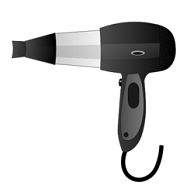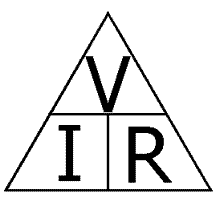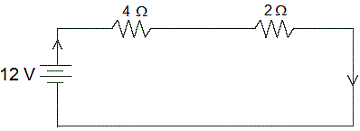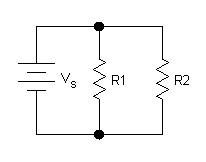Electricity Problemset Using Ohm's Law
| V = I R | I = V / R | R = V / I |
In the equations above, V stands for _____________________________ and is measured in _______________
I stands for _______________________________________________ and is measured in ________________
R stands for ______________________________________________ and is measured in _________________
 1. A 12 ohm hair dryer is plugged into a 240 V power supply. What is the current?
1. A 12 ohm hair dryer is plugged into a 240 V power supply. What is the current?
V =
I =
R =
2. What is the voltage of a circuit that has a resistance of 100 and an internal current of 2 amps.
V =
I =
R =
3. A car battery of 12 V is used to drive a current through a resistance of 4 ohms. Find the current .
V =
I =
R =
 4. If a circuit has a resistance of 8Ω and a current of 5A, what is the voltage?
4. If a circuit has a resistance of 8Ω and a current of 5A, what is the voltage?
V =
I =
R =
5. What is the resistance if voltage is 3.0 V and current is 1.5 A?
V =
I =
R =
 6. Circuits will often have multiple resistors. In the diagram, a simple circuit is shown. To determine the total resistance R, you add the two resistors together. What is the current in this circuit?
6. Circuits will often have multiple resistors. In the diagram, a simple circuit is shown. To determine the total resistance R, you add the two resistors together. What is the current in this circuit?
V =
I =
R (add the two resistors) =
 7. Calculate the current in this circuit.
7. Calculate the current in this circuit.
V =
I =
R (add the two resistors) =
 8. Parallel circuits work a little different, as the current is split between the two pathways. Calculate each path's current using the same formula, then add them together to get the total current. In the diagram R1 (resistance 1) = 4Ω and R2 = 4Ω. The voltage is 100.
8. Parallel circuits work a little different, as the current is split between the two pathways. Calculate each path's current using the same formula, then add them together to get the total current. In the diagram R1 (resistance 1) = 4Ω and R2 = 4Ω. The voltage is 100.
What is the current that is moving through the R1 path?
What is the current that is moving through the R2 path?
What is the total current in this circuit (add R1 and R2)?
